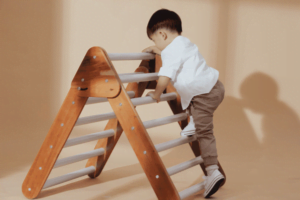Prompts Hierarchy
Prompts hierarchy is a strategy used in various fields, especially education and therapy, to guide and support someone in completing a task or learning a new skill. It involves providing different levels of assistance, starting with the most help and gradually decreasing it as the learner becomes more independent.
How Does a Prompts Hierarchy Work?
- Most Help (Full Prompt): You physically demonstrate and guide the child through each step, For example showing a child how to tie their shoes, “First, cross the right shoelace over the left. Now, tuck it under the loop.”
- Medium Help (Partial Prompt): You might ask a question to prompt the child’s memory. For example, “What do we do with the right shoelace first?”
- Least Help (Minimal Prompt): According to the child’s increased skill, you might simply offer a nonverbal cue. Such as a smile or a nod, in order to encourage the child to try independently.
Different Types of Prompts:
- Physical Prompts: This involves physically guiding the learner’s hand or body through the steps of the task.
- Verbal Prompts: These are instructions or questions that guide the learner’s thinking and actions. For example, saying “What do we do with the right shoelace first?”
- Visual Prompts: These can be pictures, diagrams, or demonstrations that visually represent the steps involved in the task.
- Gestural Prompts: Nonverbal cues like a smile, nod, or pointing can encourage the learner to try the task independently or remind them of a specific step.

Benefits of Prompts Hierarchy:
- Supports Learning: By providing different levels of assistance, a prompt hierarchy allows learners to build skills gradually. It ensures they understand the task before being left to complete it independently.
- Boosts Confidence: As learners successfully complete tasks with decreasing support, their confidence grows. This motivates them to keep learning and trying new things.
- Promotes Independence: The ultimate goal is for learners to become independent. A prompt hierarchy helps them reach this point by gradually withdrawing support.
- Adapts to Individual Needs: The level of prompting can be adjusted based on the individual’s needs and learning pace. This ensures everyone receives the appropriate level of support.
- Improves Problem-Solving Skills: By gradually reducing prompts, a prompt hierarchy encourages learners to think critically and solve problems independently. As they work through tasks with less support, they develop strategies to overcome challenges and approach new situations with confidence.
By utilising prompt hierarchies effectively, educators, therapists, and trainers can create a supportive learning environment that empowers individuals to reach their full potential.
